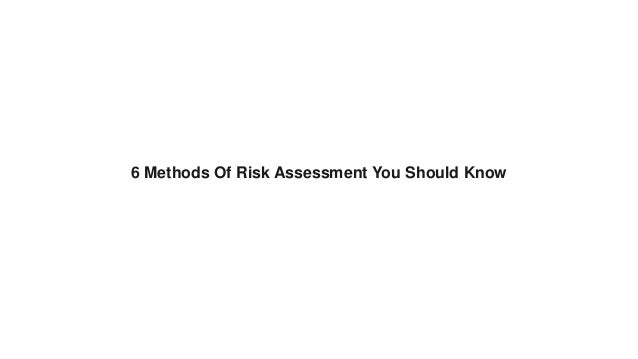
6 Methods Of Risk Assessment You Should Know.pdf
- 1. 6 Methods Of Risk Assessment You Should Know
- 2. • Methods of risk assessment differs in different sectors and organisations, but a method adopted should best suit the organization process. • Before we get into the subject of the article, let use refresh our minds on what risk assessment entails. • Risk assessment is the determination of quantitative or qualitative estimate of risk related to a well-defined situation and a recognized threat (also called hazard).
- 3. Mathematically: Quantitative risk assessment requires calculations of two components of risk (R) The magnitude of the potential loss (L), and The probability (p) that the loss will occur. In summary, to conduct risk assessment, 5 main steps are always adopted. Identify the hazard: Be it physical, mental, chemical or biological. Decide who could be harm Assess the risk Make record of findings
- 4. In the engineering of complex systems, sophisticated risk assessments are often made within safety engineering and reliability engineering when it concerns threats to life, environment or machine functioning. Methods for risk assessment may differ between industries and whether it pertains to general financial decisions or environmental, ecological, or public health risk assessment. There are several methods of risk assessment which can help identify risk, assess the risk appropriately and help in the risk management.
- 5. Some of these most used methods of risk assessment include: 1. What-if analysis 2. Fault tree analysis (FTA) 3. Failure mode event analysis (FMEA) 4. Hazard operability analysis (HAZOP) 5. Incident BowTie 6. Event Tree Read Full Article